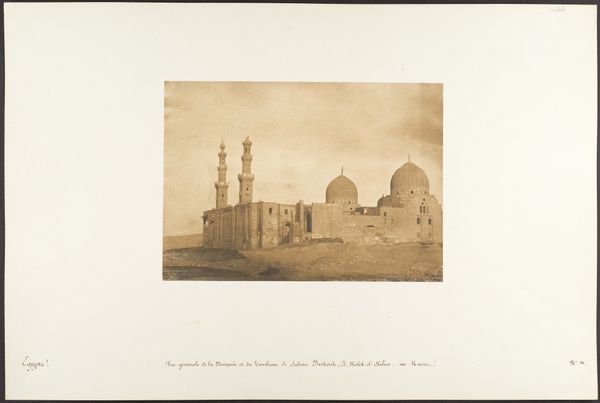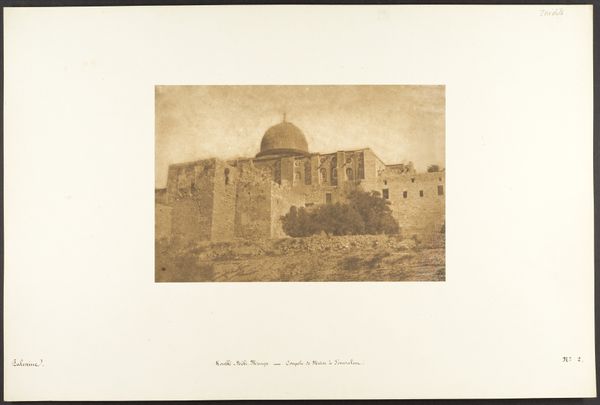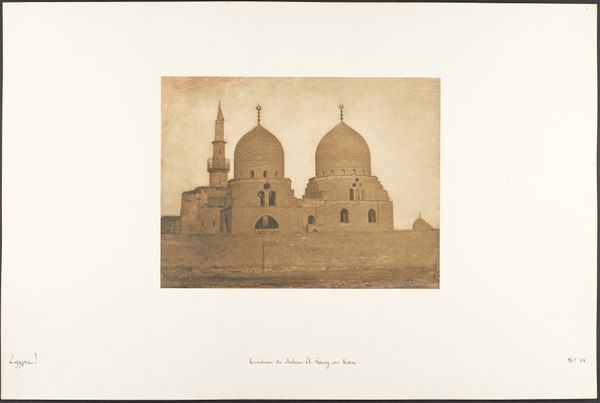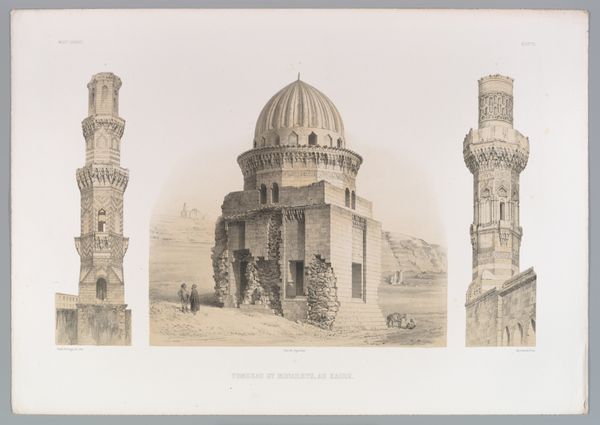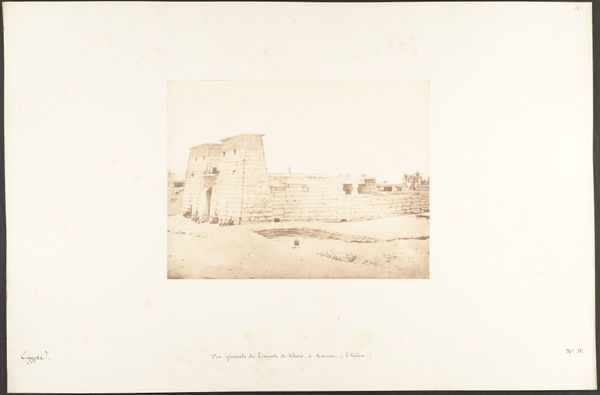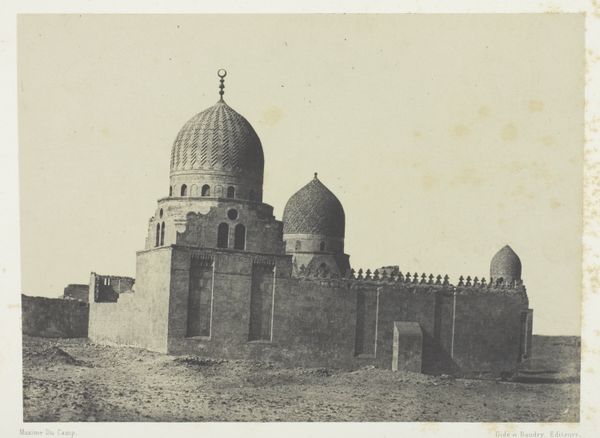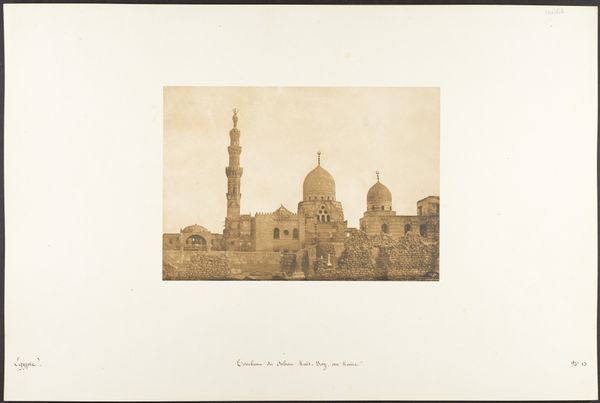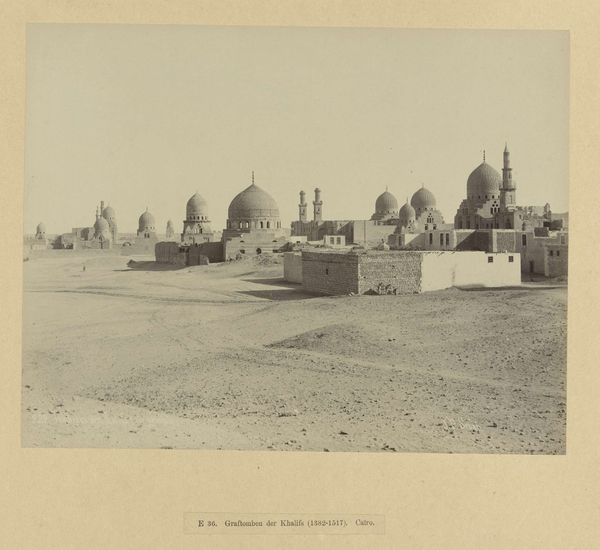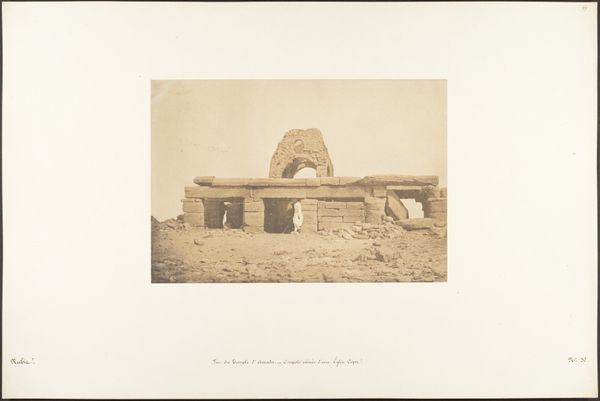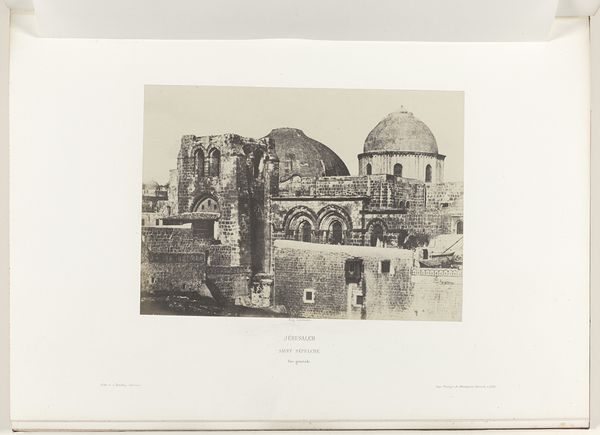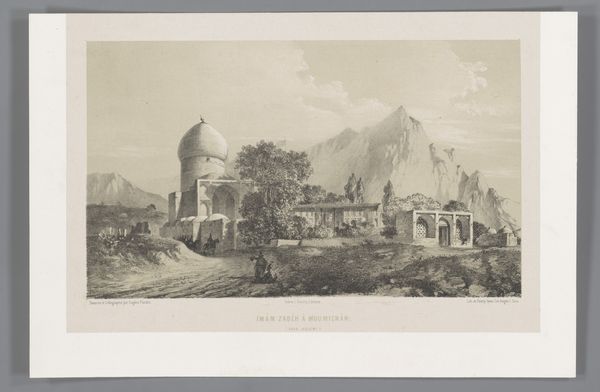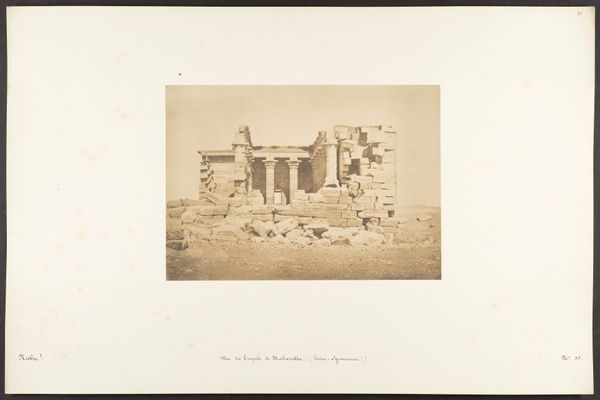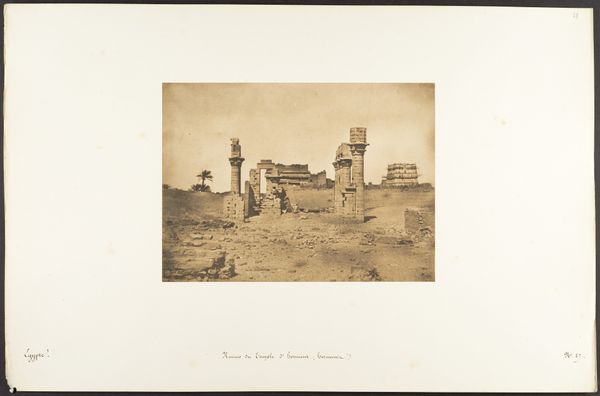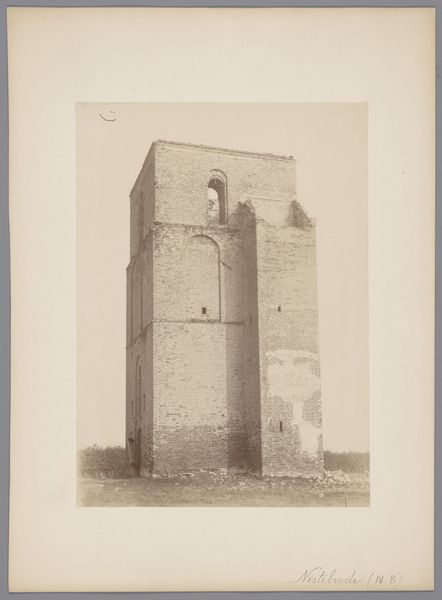
daguerreotype, photography, architecture
#
landscape
#
daguerreotype
#
photography
#
islamic-art
#
architecture
Dimensions: Image: 6 3/8 × 8 9/16 in. (16.2 × 21.8 cm) Mount: 12 5/16 × 18 11/16 in. (31.2 × 47.5 cm)
Copyright: Public Domain
This photograph of the Tombeau des Sultans Mamelouks in Cairo was captured by Maxime Du Camp sometime in the mid-19th century, using the calotype process. This early photographic technique, using paper negatives, gives the image its distinctive soft focus and sepia tone. Du Camp was among the first to use photography for documentation on a large scale. He was commissioned to record monuments and sites in Egypt, and this image is a product of that project. The calotype, while celebrated for its artistic qualities, was also a tool of colonial documentation. It allowed for the relatively quick reproduction of images, contributing to a Western understanding, and to some extent, control of foreign lands. Consider the labor involved, not only in Du Camp’s travels and photographic work, but also in the original construction of the tombs themselves. This image collapses time, connecting the manual labor of the Mamluk builders with the emerging industrial processes of 19th-century photography. It challenges us to consider the social and economic implications of both.
Comments
No comments
Be the first to comment and join the conversation on the ultimate creative platform.
